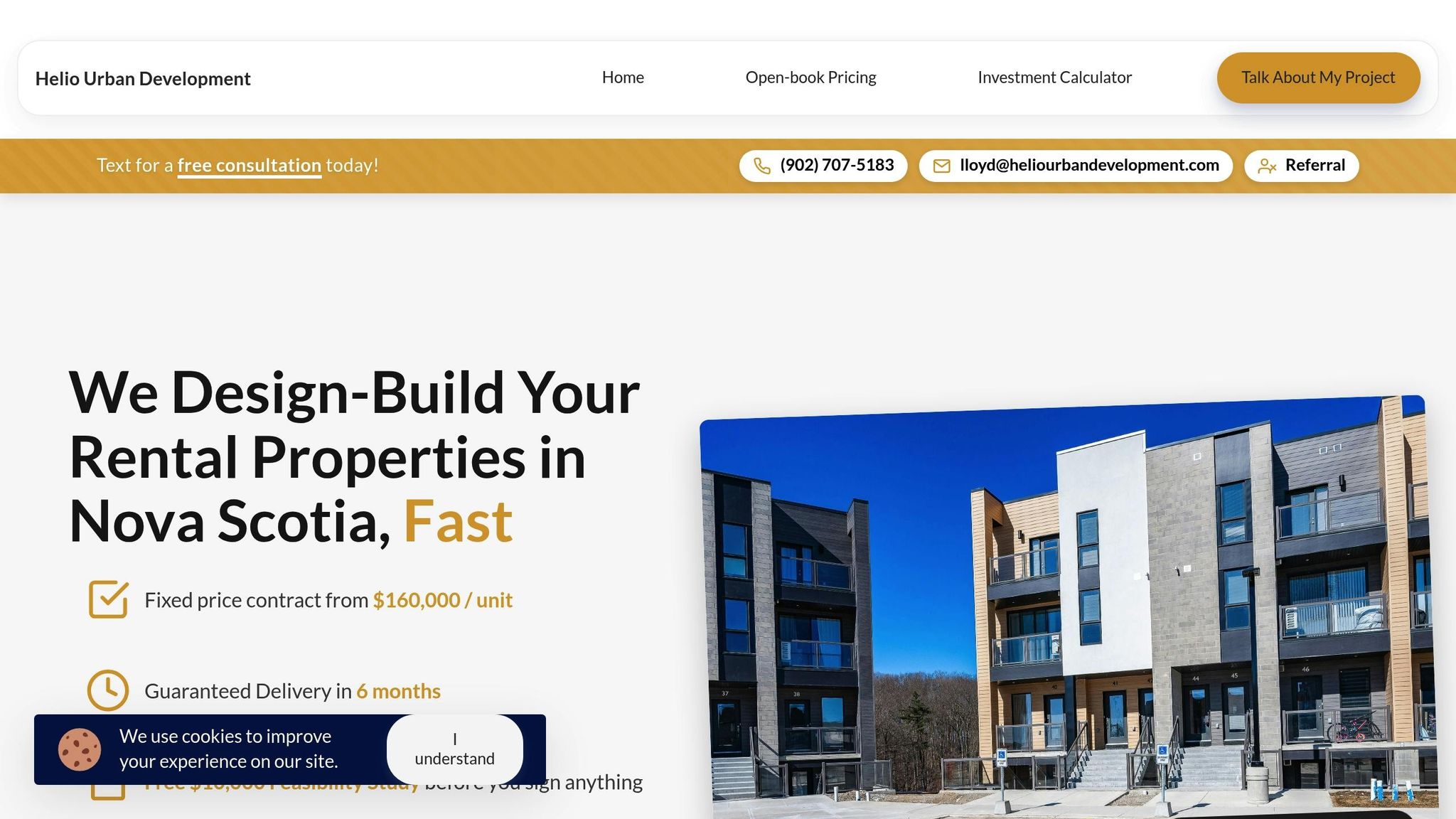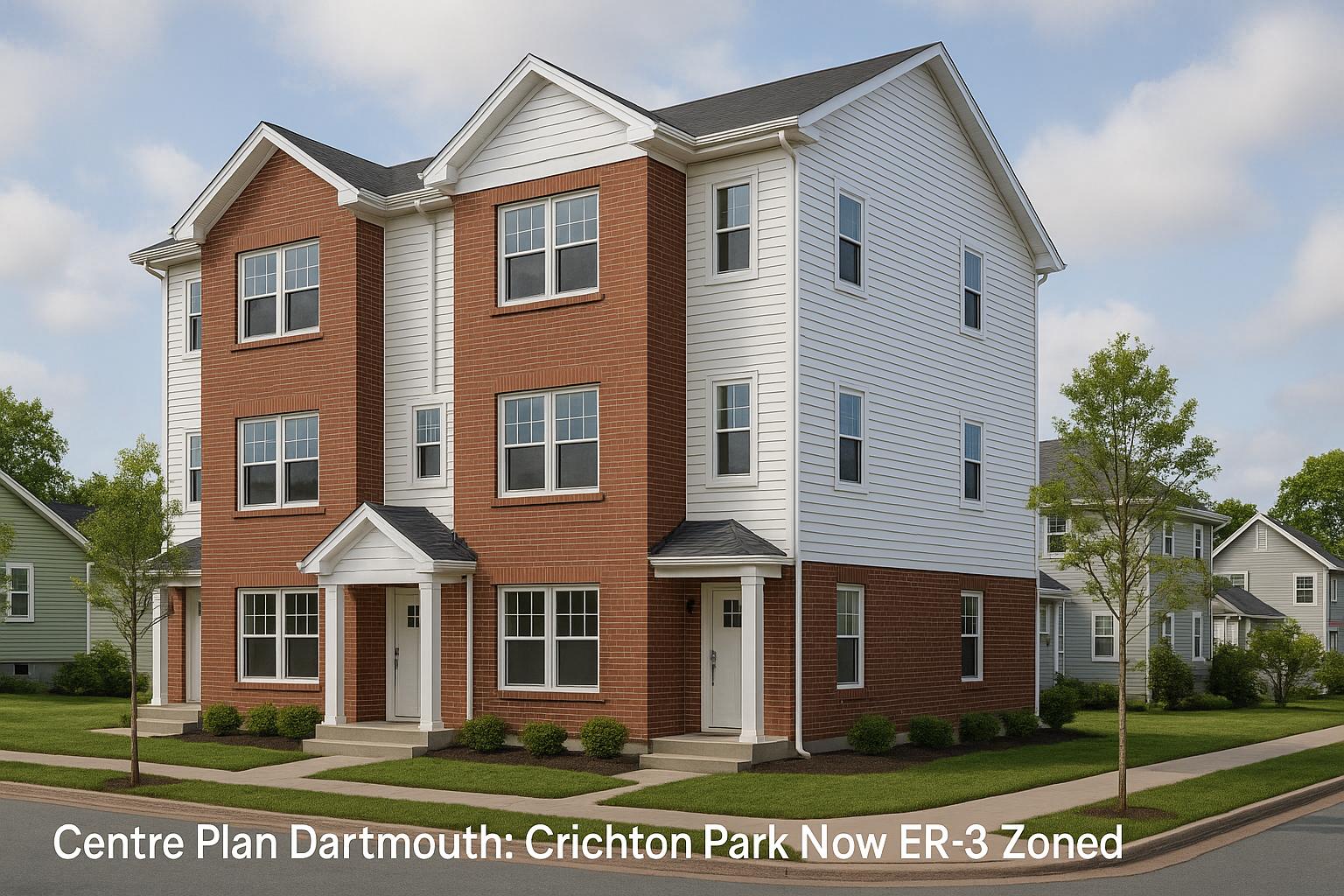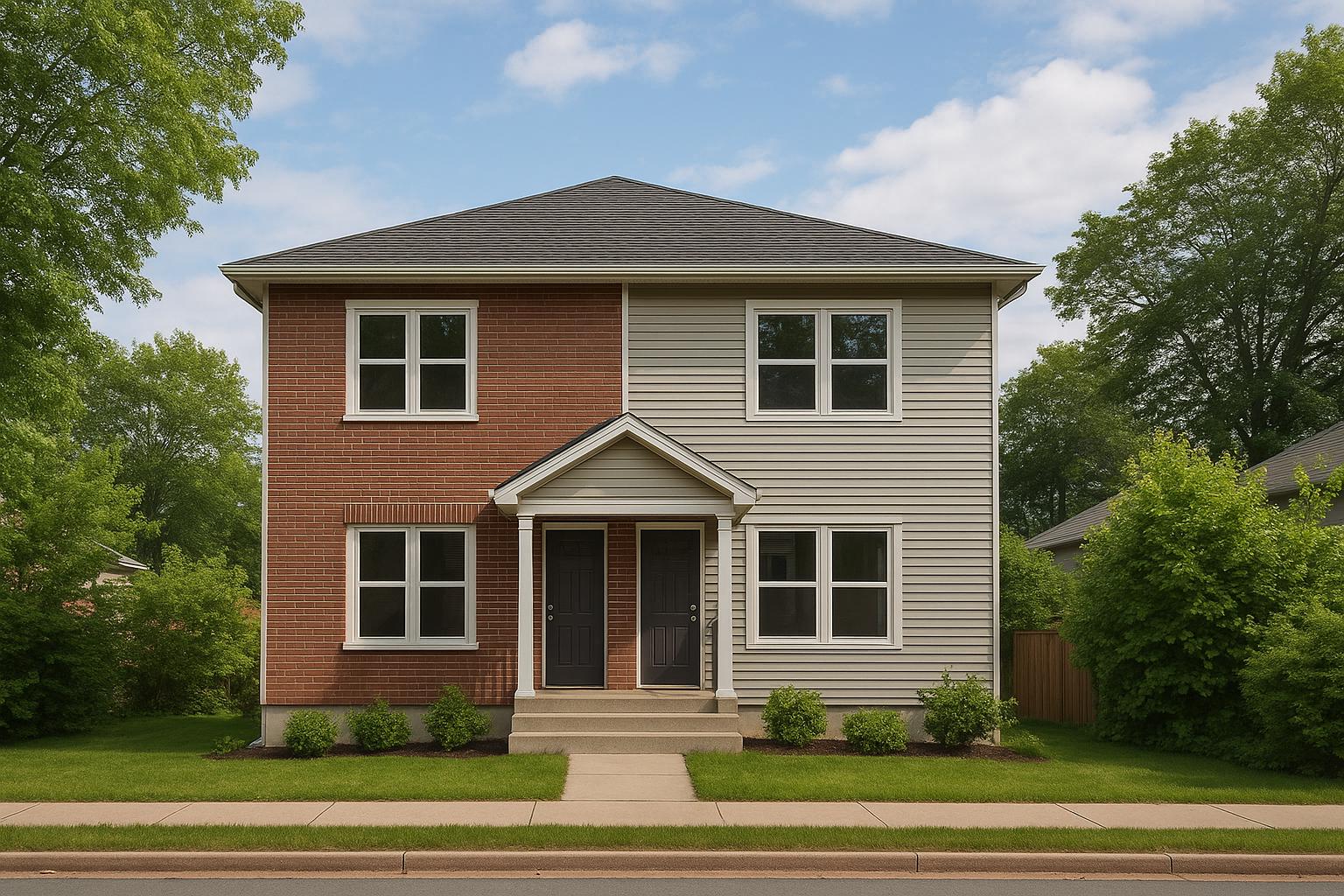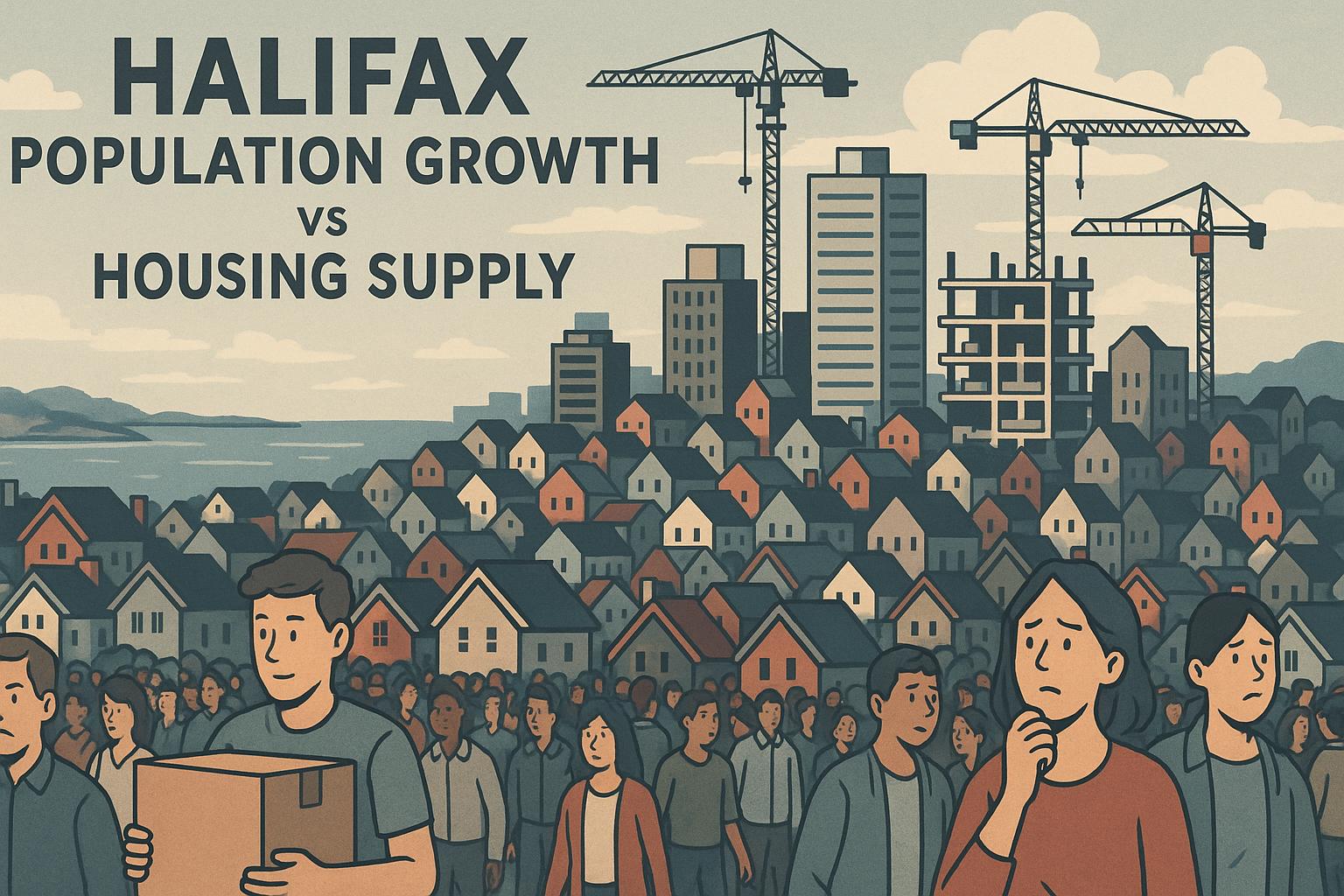Nova Scotia is facing a housing supply crunch as population growth, driven by immigration and interprovincial migration, outpaces new construction. This imbalance is leading to rising rents and low vacancy rates, particularly in Halifax and surrounding areas. Addressing this gap requires faster, more efficient construction methods, with integrated design-build models offering a solution to delays and cost overruns seen in traditional approaches.
Key points:
- Population growth: Nova Scotia’s population reached 1,093,245 by mid-2025, with immigration as the main driver.
- Housing demand: Rental demand is surging, especially in Halifax, Bedford, Dartmouth, and smaller communities within a 90-minute radius of Halifax.
- Construction challenges: Delays, budget overruns, and regional disparities in multi-unit builds are widening the supply-demand gap.
- Solutions: Integrated design-build methods streamline construction, offering fixed costs, faster timelines, and better accountability.
- Opportunities for developers: High-demand areas like Dartmouth, Truro, and the Annapolis Valley present strong rental markets, supported by financing programs like CMHC MLI Select and provincial incentives.
With demand outpacing supply, this is a critical time for property owners to invest in efficient multi-unit rental projects.
Unlocking NOVA SCOTIA Housing Growth: Challenges & Solutions
Population Growth and Housing Demand in 2025
Nova Scotia's population is steadily increasing, though the rapid growth seen during the pandemic has now settled into a more moderate pace. These shifts in demographics are directly influencing the region's rental market. Here’s a closer look at the numbers shaping this trend.
Nova Scotia Population Growth: 2024–2025 Data
By July 1, 2025, Nova Scotia's population reached 1,093,245, marking an increase of 10,476 people over the previous year - a growth rate of approximately 1.0% [1]. This steady growth aligns with long-term trends for the province.
The main driver of this population increase is international immigration, which added 10,984 residents. Net interprovincial migration also contributed, bringing in 3,226 new people [1]. However, these gains were partially offset by a natural population decline, with deaths outpacing births by 3,327 - a pattern that has persisted since 2016 [1]. Non-permanent residents now make up 4.9% of the population, totalling 53,479 individuals as of April 1, 2025 [2].
While Nova Scotia continues to attract more residents from other provinces than it loses, the surge in interprovincial migration seen during the pandemic has eased. Net gains remain positive but are smaller compared to the peak years of 2020–2022 [1].
Rental Market: Supply vs. Demand Analysis
These population trends are reshaping the rental market, presenting both challenges and opportunities. From April 1, 2024, to March 31, 2025, the province welcomed 13,140 new immigrants [2], a group that typically fuels rental demand as they settle into their new surroundings.
With a median age of 43.3 years [1], many of these newcomers are likely to opt for rental housing, whether they are young professionals or families. Halifax Regional Municipality continues to be the focal point of population growth, but smaller communities within a 90-minute drive of Halifax are also experiencing increased demand. Additionally, as Nova Scotia’s population ages, there is a growing need for rental housing that caters to seniors, including accessible units and properties near essential services.
To keep pace with these changes, the rental market must adapt. For property owners, this sustained demand highlights the importance of delivering rental units across various market segments. The steady flow of international immigrants and interprovincial movers underscores the urgency of efficient construction practices. Adopting integrated design-build methods, rather than fragmented approaches, will be key to meeting these housing needs efficiently.
Multi-Unit Housing Supply: Construction Data and Gaps
Nova Scotia’s multi-unit housing construction is struggling to keep up with the province’s growing rental demand. While the population has been steadily increasing, the pace of construction hasn’t matched the need for rental housing, creating significant challenges.
Construction Starts and Completions
The province’s multi-unit construction activity has been uneven in recent years, particularly in the 4–24 unit rental property segment. Delays in project completions are often linked to poor coordination between contractors, architects, and trades. These inefficiencies have slowed progress and made it harder to meet housing needs.
Adding to the problem, the traditional cost-plus construction model has led to frequent budget overruns. As a result, some property owners have chosen to delay or even cancel their projects. Regional factors also play a role, with progress varying widely across different parts of Nova Scotia.
Regional Construction Differences
In the Halifax Regional Municipality, construction activity is relatively strong, but local permitting and zoning processes have created bottlenecks, delaying project approvals and starts. Smaller communities within a 90-minute drive of Halifax face their own hurdles, such as inadequate infrastructure and a shortage of skilled tradespeople. In these areas, property owners often encounter difficulties working with contractors who lack experience in multi-unit projects.
Other regions, like the Annapolis Valley, show mixed results. While some municipalities are making headway, others lag far behind in addressing housing demand. Cape Breton’s multi-unit construction is mostly focused in urban centres, but economic challenges in the region have made it tough to attract skilled builders.
Supply-Demand Gap: Current Status
These delays and regional disparities have widened the gap between housing supply and demand. Fragmented construction methods and unreliable project timelines exacerbate rental shortages. To address this, property owners are increasingly turning to integrated design–build solutions, which offer single accountability and fixed-price contracts. Moving toward more efficient and predictable construction practices will be critical in narrowing the supply-demand gap in the years ahead.
sbb-itb-16b8a48
How Integrated Design-Build Addresses Housing Shortages
Tackling inefficiencies in construction is critical to narrowing Nova Scotia's widening housing supply gap. The province needs to double its multi-unit housing starts - from 5,400 to 12,500 annually - to meet the growing demand for homes [3].
Fragmented vs. Integrated Construction Methods
Traditional construction methods often require property owners to juggle multiple professionals - architects, engineers, general contractors, subcontractors, permit specialists, and project managers. This fragmented process can lead to poor coordination, with miscommunication causing delays, budget overruns, and unclear accountability.
Projects using this approach frequently see costs exceed budgets by 30–60%, while timelines stretch from 8 to 18 months. These delays not only drive up expenses but also postpone rental income. Adding to the uncertainty, the cost‐plus construction model relies on estimates rather than fixed pricing, leaving owners vulnerable to fluctuating material costs, rising labour expenses, and unexpected scope changes.
Integrated design‐build construction offers a more efficient solution by uniting all construction professionals under one organization. Instead of managing multiple relationships and contracts, property owners work with a single company that handles design, engineering, permitting, and construction. This cohesive model ensures guaranteed timelines, clear accountability, and upfront cost certainty, saving property owners an average of $47,000 in excess expenses. It also allows owners to start earning rental income as scheduled, paving the way for new solutions in the housing sector.
Helio Urban Development: Integrated Construction in Action

Helio Urban Development provides a clear example of how integrated design‐build can accelerate housing projects. The company addresses common construction challenges with a streamlined approach that delivers fixed-price construction at $160,000 per unit within a guaranteed six-month timeline - far quicker than traditional methods. Currently, Helio has 31 units under construction across Nova Scotia and another 131 in the planning phase, serving property owners within a 90-minute radius of Halifax.
A standout feature of Helio's process is its advanced scheduling optimization system, which ensures trades work sequentially to avoid the delays typical in conventional models. Quality is rigorously maintained through a triple-layered verification system: a Professional Engineer conducts five inspections during construction, property owners select the final inspector, and all work is backed by a two-year warranty. Daily project updates keep owners informed, reducing uncertainty throughout the build.
For property owners looking to maximize financing opportunities, Helio offers a CMHC MLI Select construction option at $200,000 per unit. These energy-efficient builds qualify for up to 95% financing with 50-year amortization. Additionally, Helio’s Premium Rental Ready Package - a $15,000 per unit upgrade - includes Energy Star appliances, smart home technology, and essential furnishings, eliminating the typical 60-day gap between construction completion and generating rental income.
Helio also provides a penalty-backed guarantee: if construction exceeds the six-month timeline, they compensate property owners up to $1,000 per day. This commitment helps owners achieve a targeted annual return on investment of 12–20%, making the integrated design-build model an attractive choice for addressing housing shortages efficiently.
Market Opportunities and Building Strategies
Nova Scotia's housing shortage presents a timely opportunity for property developers to invest in strategic construction projects with the potential for long-term financial gains. Tackling common challenges like construction delays and cost overruns is crucial when selecting the best locations to build.
High-Demand Areas: Best Locations to Build
The 90-minute radius around Halifax is an ideal region for multi-unit rental developments. It combines strong rental demand with relatively affordable land prices. Within this area, several municipalities stand out due to their growing populations, job opportunities, and solid rental markets.
- Dartmouth and Bedford: These areas offer more affordable alternatives to Halifax, with dependable transit systems and easy access to key employment hubs. Their established infrastructure supports steady rental demand for well-designed multi-unit properties. Average rents for new two-bedroom units range between $1,950 and $2,100 per month.
- Truro: Known for its appeal to commuters, Truro offers lower construction costs and available land, making it a smart choice for investors seeking strong returns. Many tenants here work in Halifax but prefer the affordability and space Truro provides.
- Kentville and the Annapolis Valley: This region attracts a mix of local workers and remote professionals, drawn by its high quality of life and improving digital infrastructure. It’s a compelling alternative to larger urban centres.
When choosing a location, property owners should prioritize areas with solid infrastructure and proximity to major highways, healthcare facilities, and educational institutions. These factors help maintain rental demand and reduce the risk of vacancies during economic downturns. Additionally, efficient construction processes can accelerate project timelines and boost market returns in these competitive areas.
Maximizing Returns with Integrated Design-Build
Using integrated design-build methods can significantly reduce risks and delays, delivering better financial outcomes for property owners. Unlike traditional construction approaches, fixed-price models provide cost certainty, shielding investors from the 30–60% budget overruns often seen in fragmented projects.
Timely completion is critical, especially when rental income is at stake. For instance, delays in completing a fourplex can cost approximately $8,800 per month in lost rental income. Integrated design-build contracts often include penalty-backed guarantees - up to $1,000 per day for late completion - ensuring contractors stay aligned with the owner’s financial goals.
Quality assurance is another advantage. Oversight by Professional Engineers and comprehensive warranty coverage can lower ongoing maintenance costs and reduce tenant turnover, protecting the long-term value of the investment.
By working with a single, integrated team that handles design, engineering, and construction, property owners avoid coordination headaches and ensure accountability. This streamlined approach is particularly important for achieving annual returns of 12–20%. Predictable timelines and cost savings also make it easier to access government and financial programs.
Financing Options and Government Programs
Nova Scotia offers several financing programs tailored to support multi-unit rental construction, helping property owners improve cash flow and leverage.
- CMHC MLI Select: This program provides up to 95% Loan-to-Value financing with amortization periods of up to 50 years, significantly lowering the upfront capital needed. Properties must meet specific energy efficiency and affordability standards to qualify [4].
- Energy-Efficient Construction Incentives: For those building energy-efficient units, the CMHC MLI Select program offers financing of $200,000 per unit. Achieving a 40% improvement in energy efficiency over building code requirements not only helps properties qualify but also lowers utility costs for tenants.
- CMHC’s Apartment Construction Loan Program: Designed for larger projects, this program offers low-cost loans ranging from $1,000,000 to 100% of residential component costs, making it ideal for developers planning multi-building developments [7].
- Nova Scotia Affordable Housing Development Program: This provincial program provides forgivable loans covering up to 50% of rental units in qualifying projects. For developments with fewer than 10 units, funding can cover up to 100% of affordable units. To qualify, projects must include at least five affordable rental units with rents set at least 20% below market rates [6].
- Community Housing Acquisition Program: This program focuses on existing properties but can complement new construction strategies. It offers fixed-interest loans for up to 95% of property costs, with terms up to 30 years and maximum loans of $10,000,000 per project [5].
Evaluating financing options early in the planning process is essential. Many programs have specific requirements that can influence design and construction decisions. Incorporating features like energy efficiency, affordability, and accessibility during the design phase can be key to securing enhanced financing terms and maximizing returns.
Building for Nova Scotia's Housing Future
Nova Scotia's housing crisis has created a pressing need - and an opportunity - for property owners ready to act with the right construction strategies. Population growth is consistently outpacing the supply of housing, driving up rental demand across the province. For property owners, this means a chance to address a critical need while benefiting from the market. Those who adopt integrated design-build methods can navigate this housing shortage more effectively than with traditional construction approaches.
The conventional construction model - where multiple independent teams are managed separately - struggles to meet the current market's demands. This fragmented system often results in poor coordination, budget overruns, and delays. These setbacks can be especially costly when rental income is tied to project timelines.
Integrated construction offers a smarter solution by consolidating all teams under one roof. Companies like Helio Urban Development demonstrate how this method delivers fixed-price, fast-tracked construction for multi-unit housing in Nova Scotia. This streamlined process not only speeds up project completion but also plays a direct role in narrowing the province's housing supply gap.
Efficiency in construction is key to protecting rental income and maximizing returns. Property owners building within a 90-minute radius of Halifax can see strong rental yields when projects are completed on time and within budget. By ensuring timeline certainty, property owners safeguard their investment and maintain steady rental income.
Government financing programs add another layer of opportunity for those who plan wisely. Properties designed with energy efficiency in mind can qualify for enhanced financing terms. These incentives allow property owners to stretch their capital further, enabling the construction of additional units while maintaining positive cash flow from the start.
Success hinges on combining strategic planning with effective execution. Property owners who leverage data to understand local market trends, select locations with solid infrastructure and employment opportunities, and work with integrated construction teams are better positioned to thrive. Moving beyond outdated construction methods that lead to delays and uncertainty is critical to seizing this opportunity.
As Nova Scotia's population continues to grow faster than its housing supply, property owners who act decisively with reliable construction approaches will find themselves well-placed in a market defined by sustained demand and favourable rental conditions. The time to act is now.
FAQs
How can the integrated design-build model help tackle Nova Scotia's housing supply challenges?
The integrated design-build model simplifies the construction process by bringing design and building services together under one contract. This setup helps cut down on delays, reduces the chances of miscommunication, and ensures clear accountability - key factors in tackling Nova Scotia's pressing housing challenges.
With fixed pricing and a structured delivery process, property owners can steer clear of surprise expenses and project uncertainties. This approach works particularly well for smaller multi-unit rental projects (4–24 units), providing a practical way to address housing shortages in the province.
What is driving the growing demand for rental housing in Nova Scotia, and how might it change in the future?
The growing demand for rental housing in Nova Scotia is being fuelled by a combination of population growth, job opportunities, tourism, and a lack of student housing. Immigration and interprovincial migration are driving more people to the province, while booming industries like IT and healthcare are attracting professionals to cities. Tourism, especially in popular areas, adds seasonal strain to the rental market, and the low availability of housing near universities highlights the pressing need for more student accommodations.
These trends show no signs of slowing down. Factors like rent control policies and changing rules around short-term rentals are also playing a role in shaping the market. For property owners, this evolving landscape presents both hurdles and openings to address the increasing demand.
What financial support and government programs are available for property owners building multi-unit rentals in Nova Scotia?
Property owners in Nova Scotia can tap into various financing options and government initiatives to support the development of multi-unit rental properties. One key program is the Affordable Housing Development Program, which offers forgivable loans for projects that include affordable rental units. This applies to both new builds and the conversion of non-residential buildings into housing.
Another option is the Community Housing Acquisition Program, designed for community housing providers. This program provides loans to help them purchase existing multi-unit properties and dedicate them to non-market housing. Additionally, the Community Housing Infrastructure and Repair Program offers forgivable loans aimed at funding capital repairs for residential buildings that include affordable rental units.
These initiatives are geared toward helping property owners and housing organizations meet the growing demand for housing while keeping affordability a priority across Nova Scotia.



